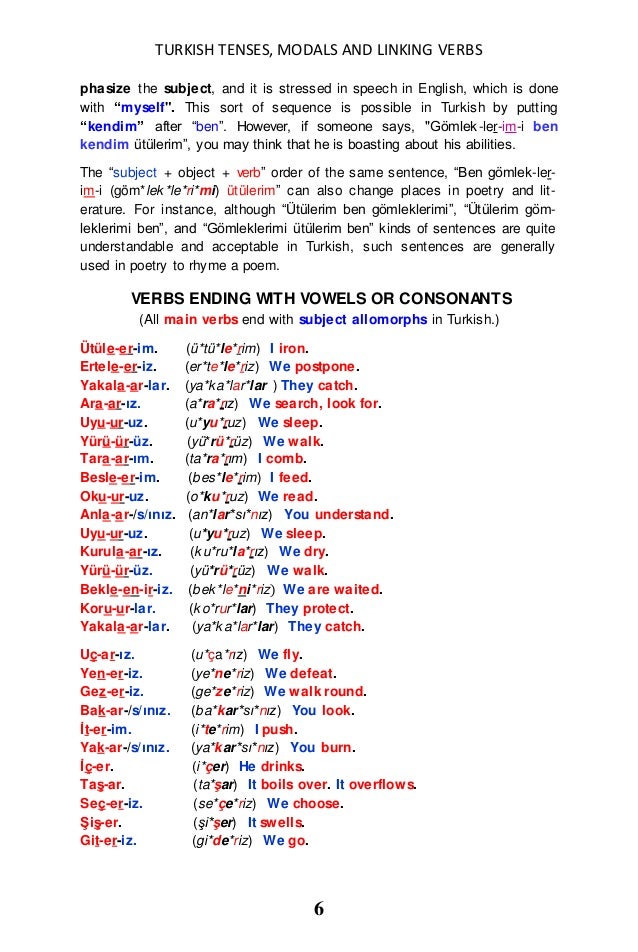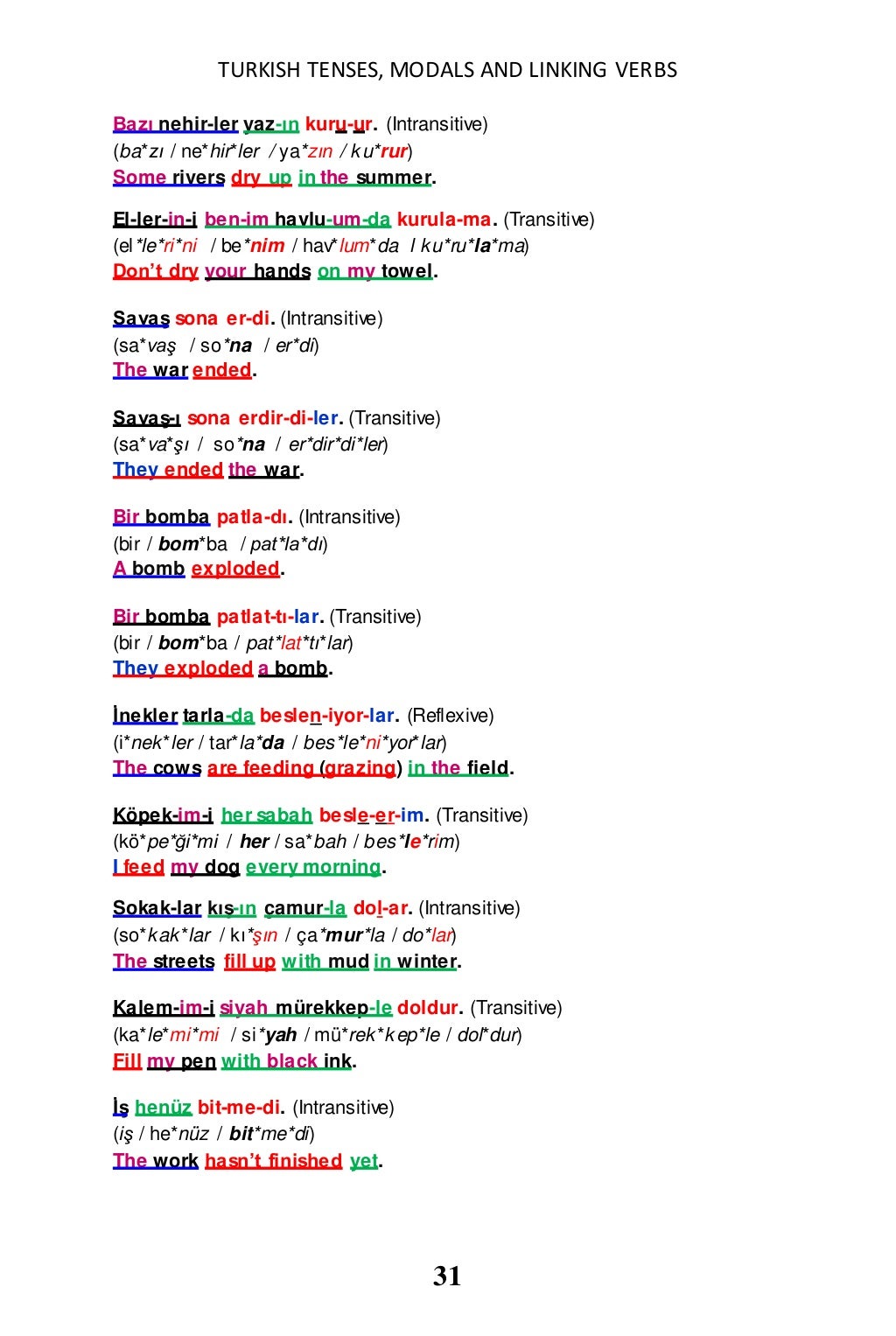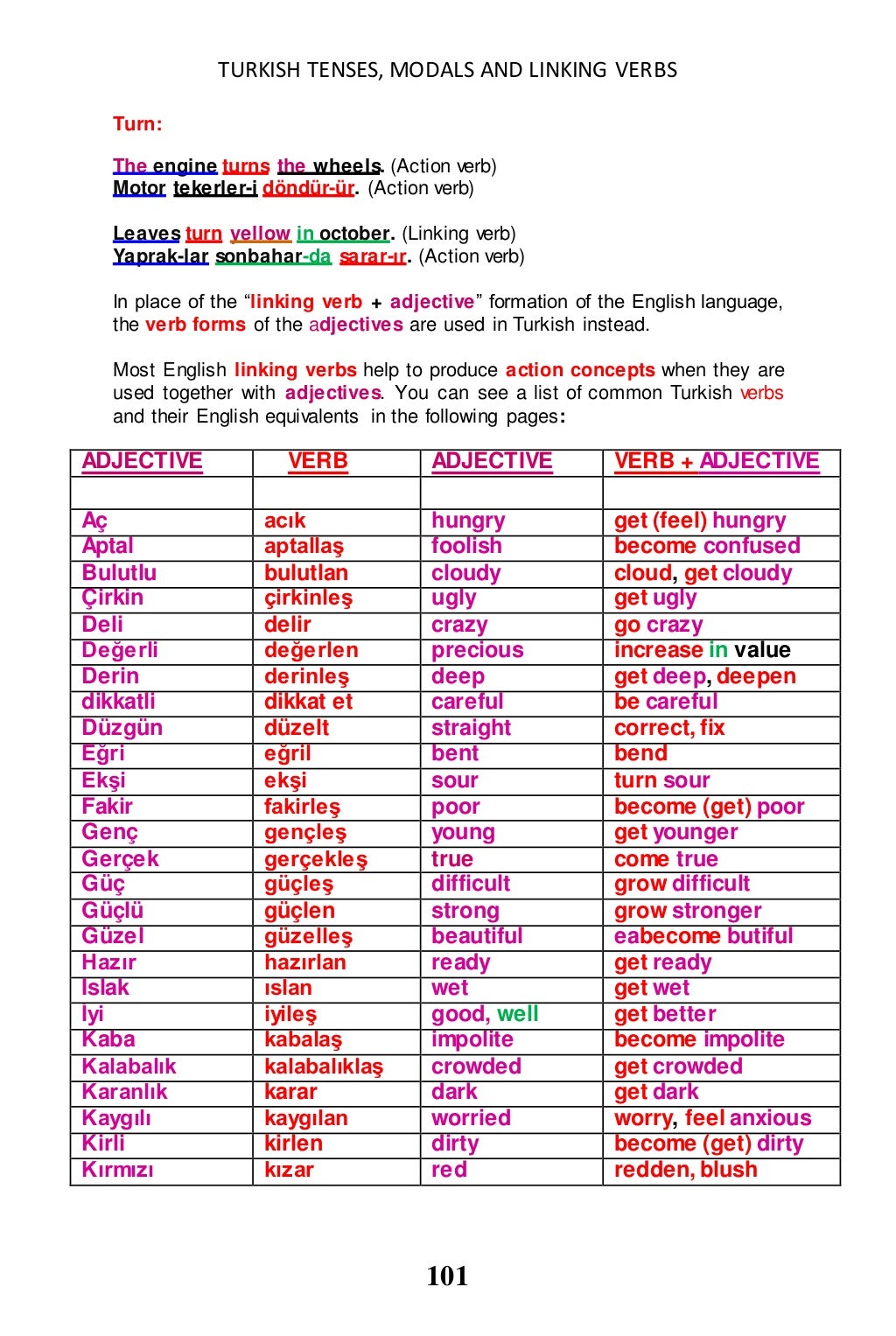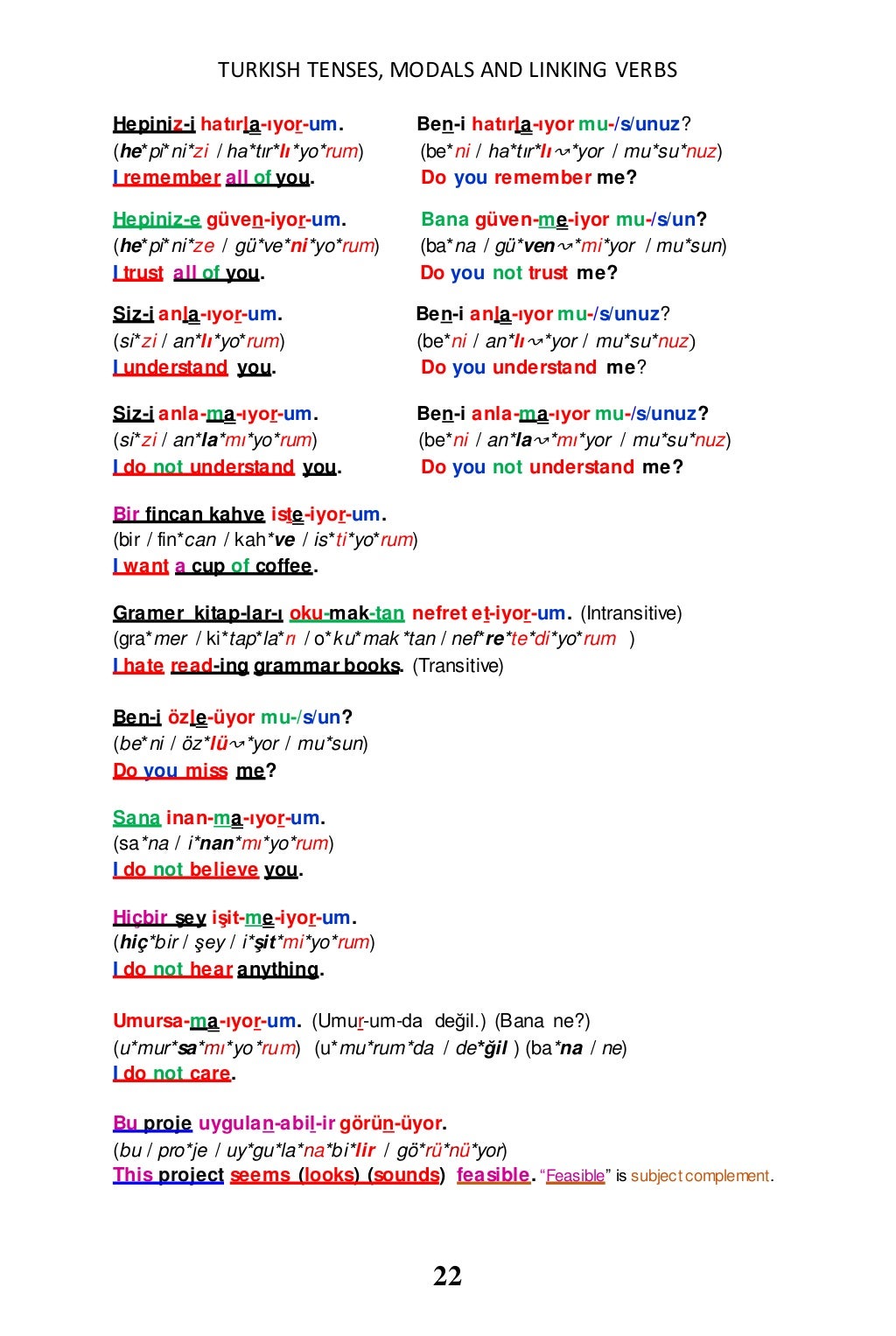
TURKISH TENSES, MODALS and LINKING VERBS in TURKISH and ENGLISH ARE D…
LEARN TURKISH VERB CONJUGATION METHOD IN ALL TENSES - TURKISH GRAMMAR 2 BASIC TURKISH LEARNING 1.58K subscribers Subscribe 1.2K 29K views 2 years ago In this video you will learn.

Learn the Basics of Turkish Suffixes of Turkish Verbs and Nouns The
Turkish verb conjugation and tenses. There are 4 main tenses in the Turkish language: The present continuous tense (şimdiki zaman). so give her a try. You will learn great amounts of Turkish in no time at all. I look forward to many more lessons with her as long as she will allow me to be her eager student. Aysegül Ö. Review. Teaching.

Learn Turkish language Grammar Tenses Positive YouTube
Past, present and future tense verbs in Turkish. Welcome to Turkish Basics.Learn basic Turkish for free online!

TURKISH TENSES, MODALS and LINKING VERBS in TURKISH and ENGLISH ARE D…
Welcome to the lesson on Turkish verb conjugation and tenses! In this lesson, we will explore the basics of Turkish verbs and how they are conjugated. Understanding verb conjugation is essential for constructing sentences and expressing actions in Turkish.

Learn Turkish Language Grammar Tenses Positive Prepositions YouTube
There are 4 main tenses in the Turkish language: The present continuous tense ( şimdiki zaman) The present simple tense ( geniş zaman ) The past tense ( geçmiş zaman) The future tense ( gelecek zaman ) Lesson outline Hide 1. The present continuous tense (şimdiki zaman) 2. The present simple tense (geniş zaman) 3. The past tense (geçmiş zaman) 3.1.

A Comprehensive Guide to Turkish Verbs
verbs embedded for recognition, over a of which have English translations available. Optional colour coding of suffixes as well as hyphens to separate suffixes to help break down longer words. iMekMak requires a one-time in-app purchase to unlock all-features. Otherwise it will be limited to just one tense, participle, verbal noun and gerund.

TURKISH TENSES, MODALS and LINKING VERBS in TURKISH and ENGLISH ARE D…
Master All Turkish Tenses (Indicative) in Just 1 Minute! 🕒Unlock the secrets of Turkish verb tenses with this lightning-fast guide. Dive into basic and comp.

TURKISH TENSES, MODALS and LINKING VERBS in TURKISH and ENGLISH ARE D…
Learn to conjugate Turkish verbs. Select a verb and a tense. Then click the button "Conjugate Verb". You can also choose your skill level (Novice-Advanced).

了解土耳其语的基础:土耳其动词和名词的后缀Glossika博客 0manbetx
#1 Learn The Turkish Verb Endings For Each Person Turkish has six different person categories that change the endings of the verb you are using. The six are: Ben (I/me) Sen (you singular) O (he/she/it) Biz (we) Siz (you formal or plural) Onlar (they)

CONJUGATE VERBS IN TURKISH / CONJUGATION IN ALL THE TENSES Learn
An inflectional suffix indicates how a word is used in a sentence. The article on Turkish grammar pertains chiefly to inflectional suffixes. The article on Turkish vocabulary treats the constructive suffixes. The vowels of suffixes undergo vowel harmony.
Verb Conjugations in Turkish Language
kocatmak, dermansızlaşmak, teşkilâtlandırmak, tıpırdatmak, sildirmek, böceklenmek, hıçkırmak, edinmek, titreşmek, getmek, sümürcenmek, genişletmek, ılınmak, kanunlaşmak, bahtıbağlıolmak, sayışmak, göbeklenmek, alaturkalaşmak, yarılanmak, zehrolmak, giyinmek, cırtlamak, köklenmek, sümsükleşmek, ergitmek, tınlamak, ovuşmak, benimsetmek, kapılmak,.

turkish verb tense Dil İlmini Araştırma Enstitüsü
To have a solid foundation for your Turkish conjugation practice, you must first grasp the basics of how verbs function in Turkish. A Turkish infinitive verb consists of two parts: A root, also known as the stem. One of three possible endings (-mak/-mek, -ış/-iş, -ur/-ür, or -ar/-er). Please note that the -mak/-mek ending is the one you.

Turkish Past Continuous Tense Explained Learn Turkish YouTube
1. Simple Past Tense in Turkish: you must use simple past tense ( -DI) to describe an action that happened in the past. Similar to English, Turkish past simple is used to describe things that happened and finished in the past. The suffix of past simple is -di/dı/ti/tı.

Indirect Sentence in Turkish (For Future Tense) EMİNE DAYAR LANGUAGE
Cooljugator: The Smart Conjugator in Turkish. This is a very simple Turkish verb conjugator. Our goal with it is to make Turkish conjugation easy, smart and straightforward. You can input verbs into the Cooljugator bar above in any form, tense or mood in both Turkish and English. The Turkish Cooljugator can currently do around 12000 verbs.

TURKISH TENSES, MODALS and LINKING VERBS in TURKISH and ENGLISH ARE D…
Review the rules and examples of the grammatical structure daily. Complete Turkish grammar exercises daily - even 5 or 10 minutes of practice will go a long way. Download and use an app for easy, convenient and frequent Turkish language practice each day. Tackle grammar topics in bite-sized chunks. Dedicate a specific time to language learning.

TURKISH TENSES, MODALS and LINKING VERBS in TURKISH and ENGLISH ARE D…
Past tense with -di (-di ' li ge çmiş zaman) --> Regular past tense. There is no suffix for the regular past tense. The only point is that you must use the past tense form of to be. Be careful about the harmony rules though, as always. The use of the past tense with -di is almost the same as the English past tense. To tell an action that took.